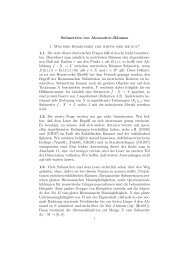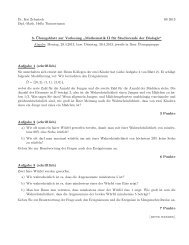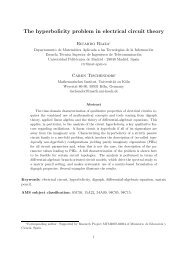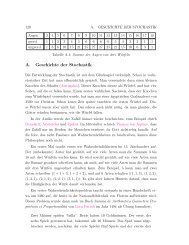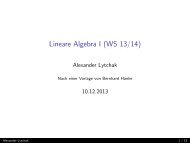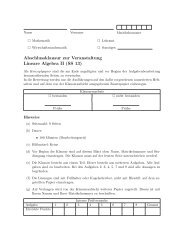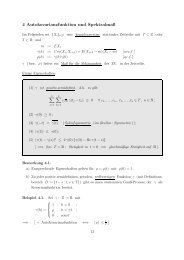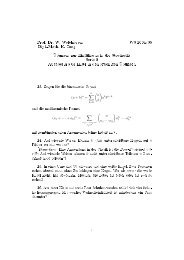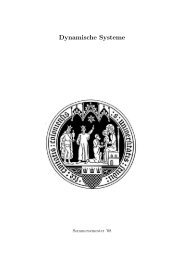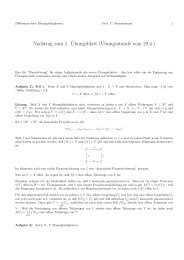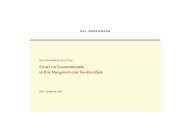Inhaltsverzeichnis - Mathematisches Institut der Universität zu Köln
Inhaltsverzeichnis - Mathematisches Institut der Universität zu Köln
Inhaltsverzeichnis - Mathematisches Institut der Universität zu Köln
You also want an ePaper? Increase the reach of your titles
YUMPU automatically turns print PDFs into web optimized ePapers that Google loves.
DMV Tagung 2011 - <strong>Köln</strong>, 19. - 22. September<br />
Matthias Kurzke<br />
<strong>Institut</strong> für Angewandte Mathematik, <strong>Universität</strong> Bonn<br />
Motion laws for Ginzburg-Landau type vortices<br />
We discuss some results about the motion of Ginzburg-Landau type vortices. Such vortices appear in<br />
various physical models such as superfluids, Bose-Einstein condensates or type II superconductors, and<br />
a related model describes vortices in thin ferromagnetic films.<br />
The most natural motion laws for these models are Schrödinger flows and gradient flows and hybrids<br />
between these. In the case of ferromagnets, the equation of motion is the Landau-Lifshitz-Gilbert (LLG)<br />
equation, a geometric flow that combines Schrödinger map flow and harmonic map heat flow.<br />
I will discuss recent results, obtained in collaborations with C. Melcher (Aachen), R. Moser (Bath) and D.<br />
Spirn (Minneapolis). For ferromagnets, I will show the <strong>der</strong>ivation of an ODE (called “Thiele equation” in<br />
the physical literature) for the vortex motion from the LLG equation. Our methods are based on a detailed<br />
control of the energy and some geometric quantities.<br />
For the model problem of the parabolic Ginzburg-Landau equations without gauge field, I will discuss joint<br />
work with D. Spirn on the <strong>der</strong>ivation of motion laws for large numbers of vortices. Using quantitative error<br />
bounds, we are able to give a rigorous PDE to mean field PDE limit for dilute Ginzburg-Landau vortex<br />
liquids.<br />
Stefan Liebscher<br />
Freie <strong>Universität</strong> Berlin<br />
Bifurcation without parameters<br />
We study dynamical systems with manifolds of equilibria near points at which normal hyperbolicity of<br />
these manifolds is violated. Manifolds of equilibria appear frequently in classical bifurcation theory by<br />
continuation of a trivial equilibrium. Here, however, we are interested in manifolds of equilibria which<br />
are not caused by additional parameters. In fact we require the absence of any flow-invariant foliation<br />
transverse to the manifold of equilibria at the singularity. We therefore call the emerging theory bifurcation<br />
without parameters.<br />
Albeit the apparent degeneracy of our setting (of infinite codimension in the space of all smooth vectorfields)<br />
there is a surprisingly rich and diverse set of applications ranging from networks of coupled<br />
oscillators, viscous and inviscid profiles of stiff hyperbolic balance laws, standing waves in fluids, binary<br />
oscillations in numerical discretizations, population dynamics, cosmological models, and many more.<br />
In this lecture we will give an overview of the behavior of flows near bifurcation points without parameters<br />
and discuss new results on bifurcations of higher codimension.<br />
55




